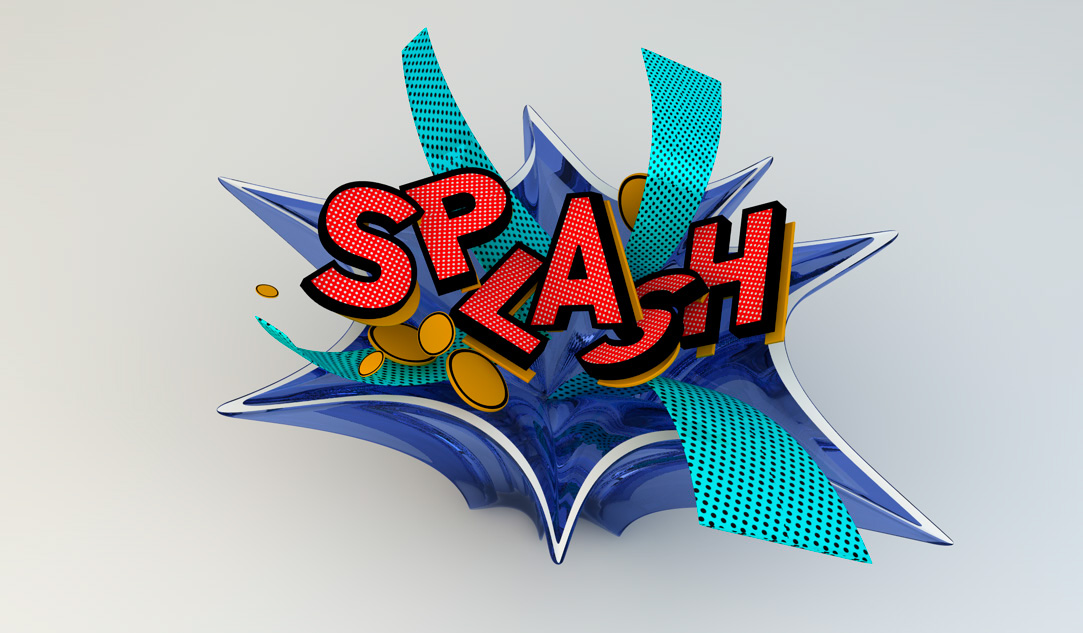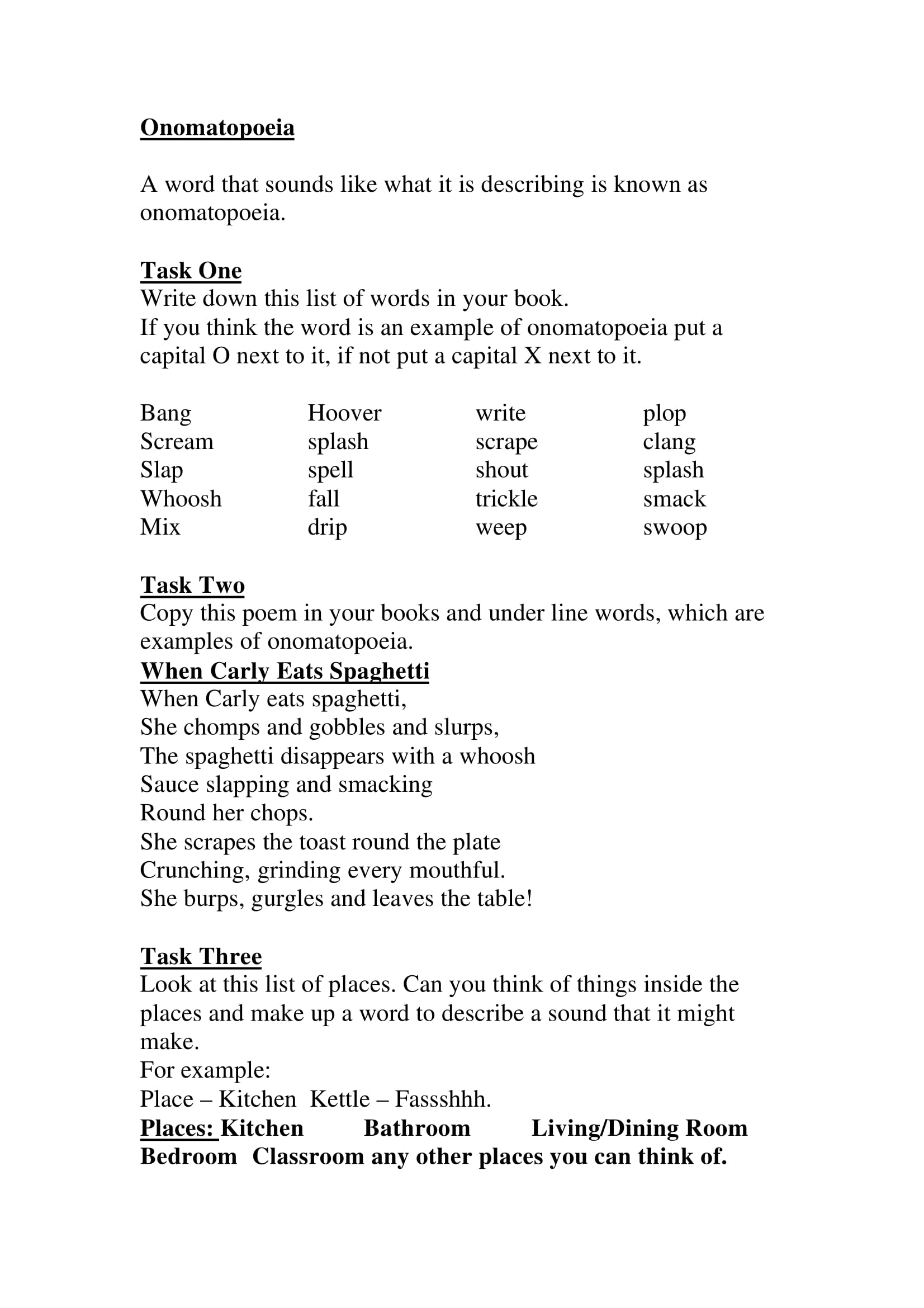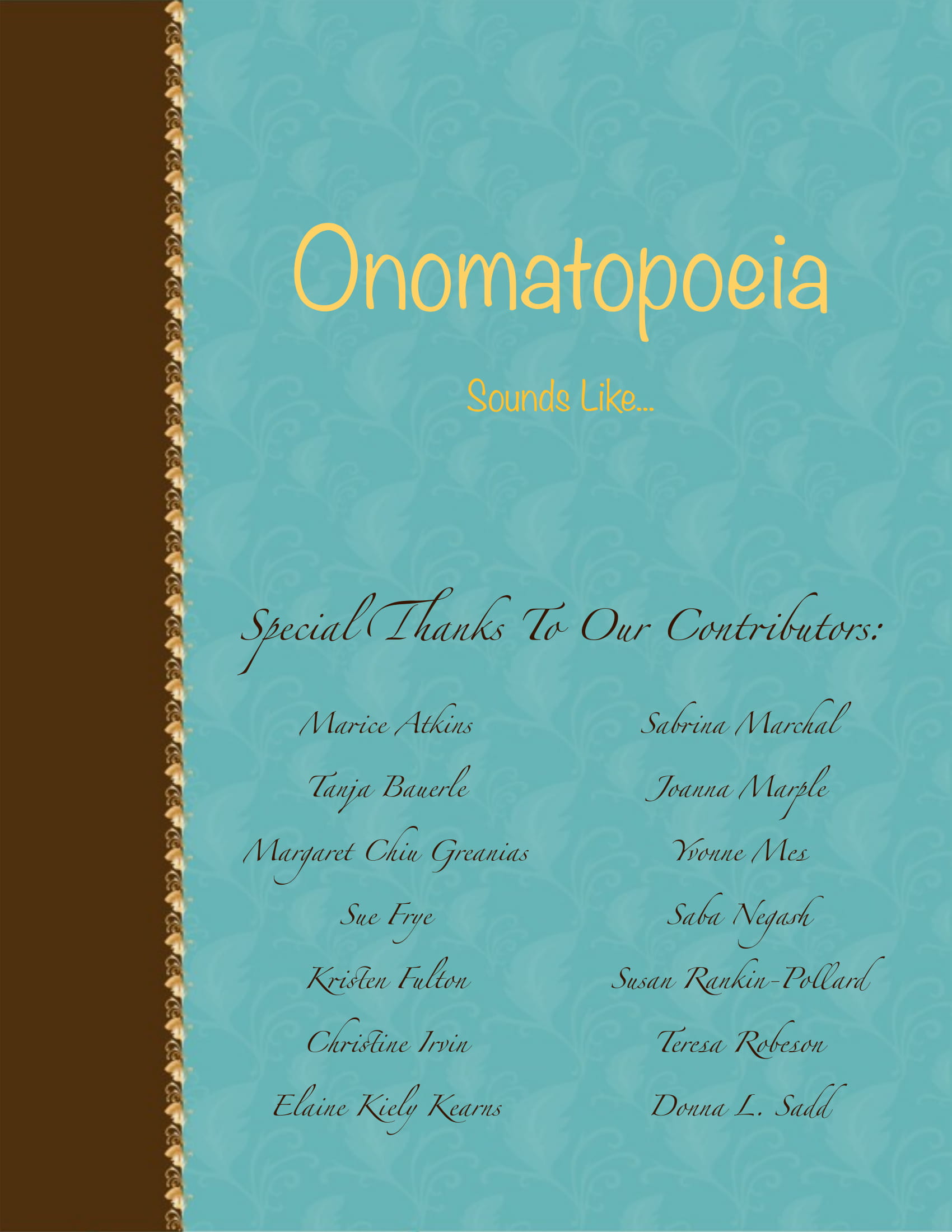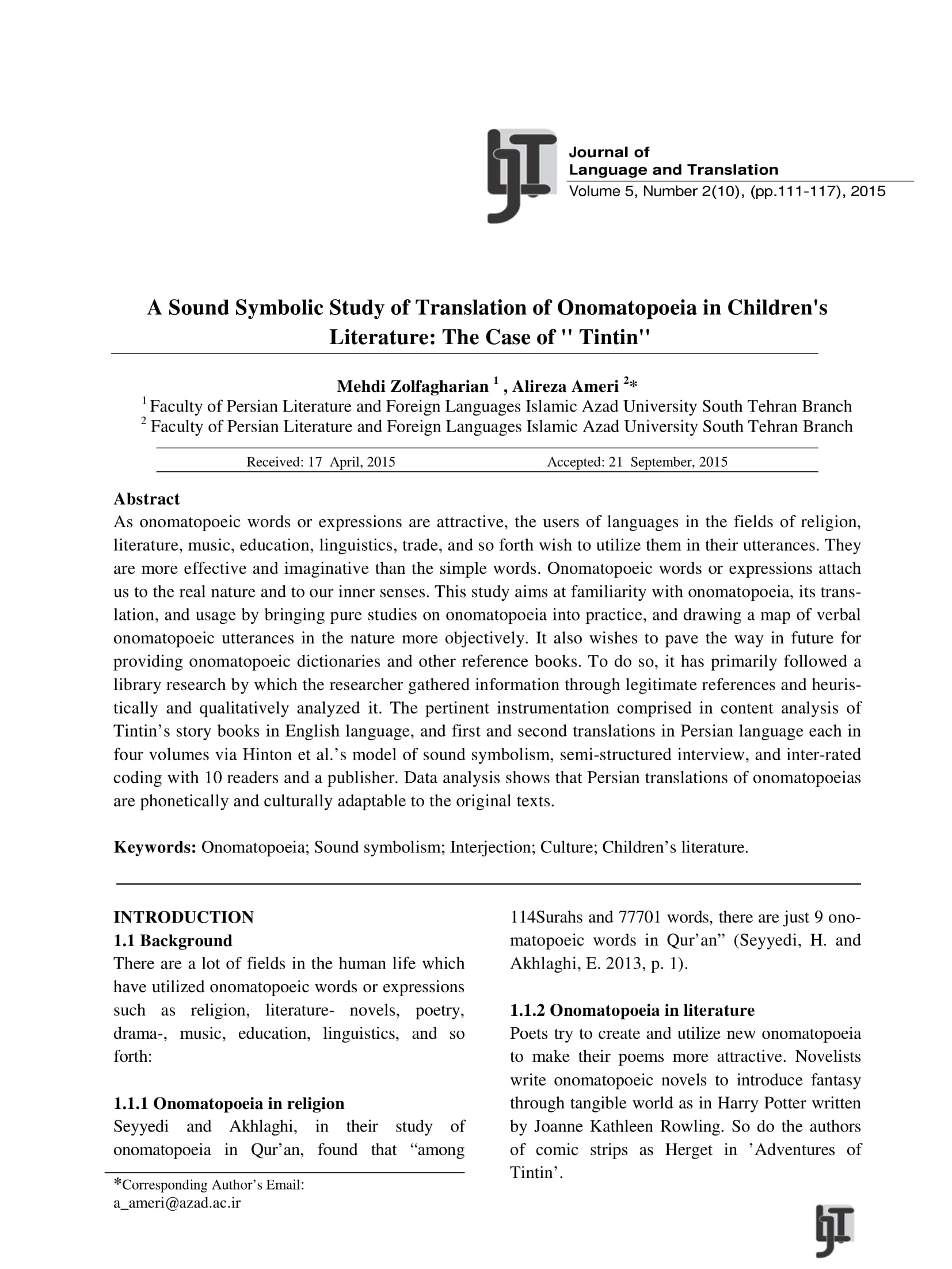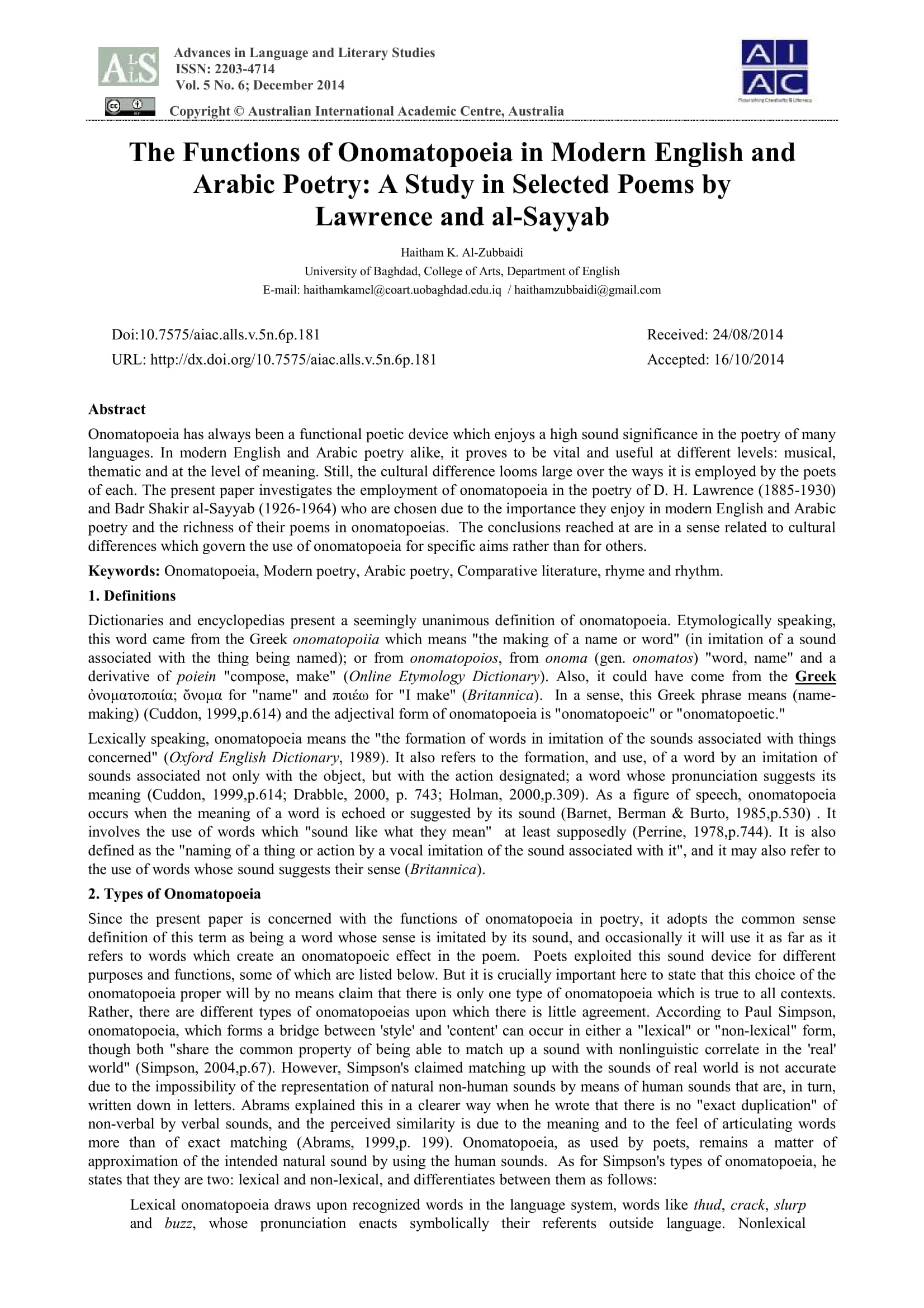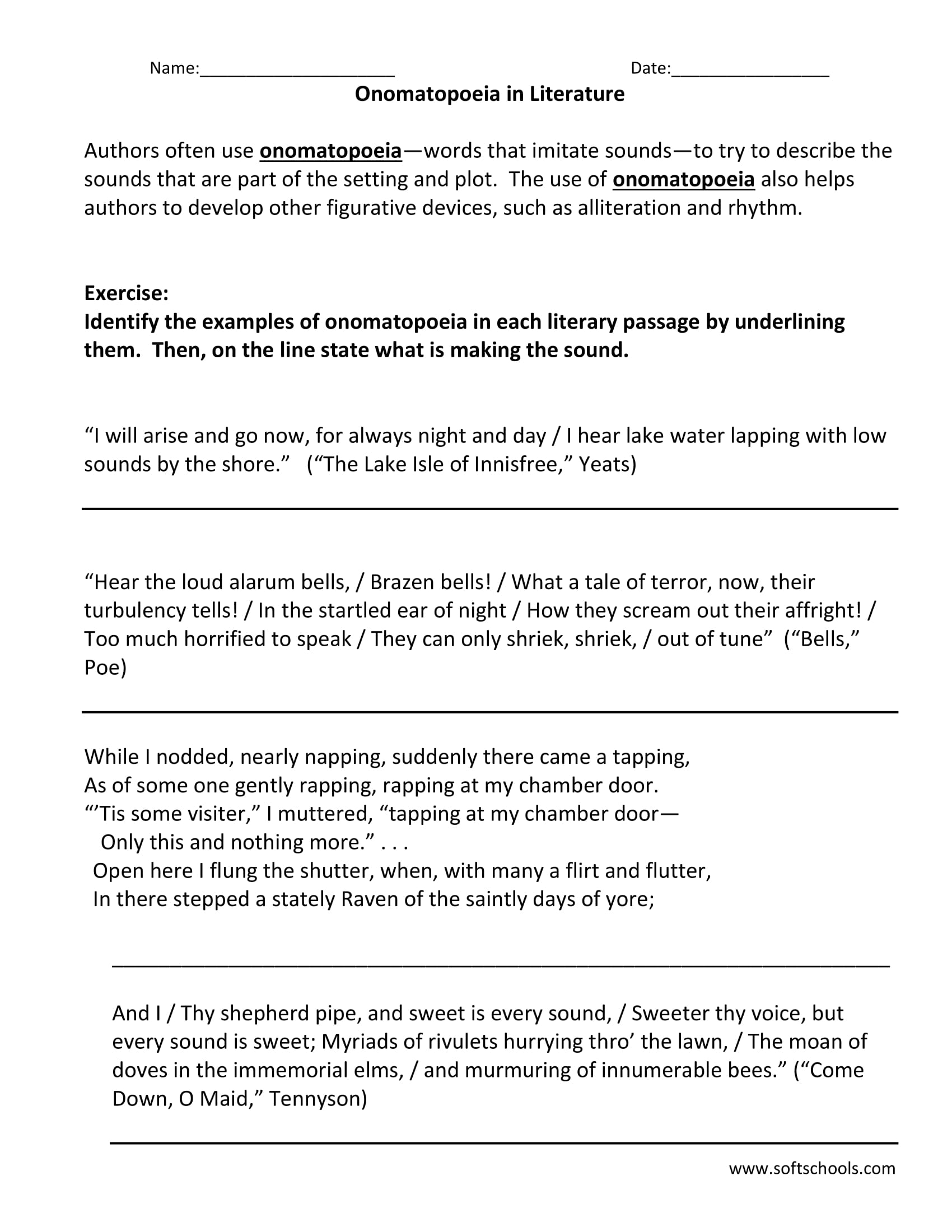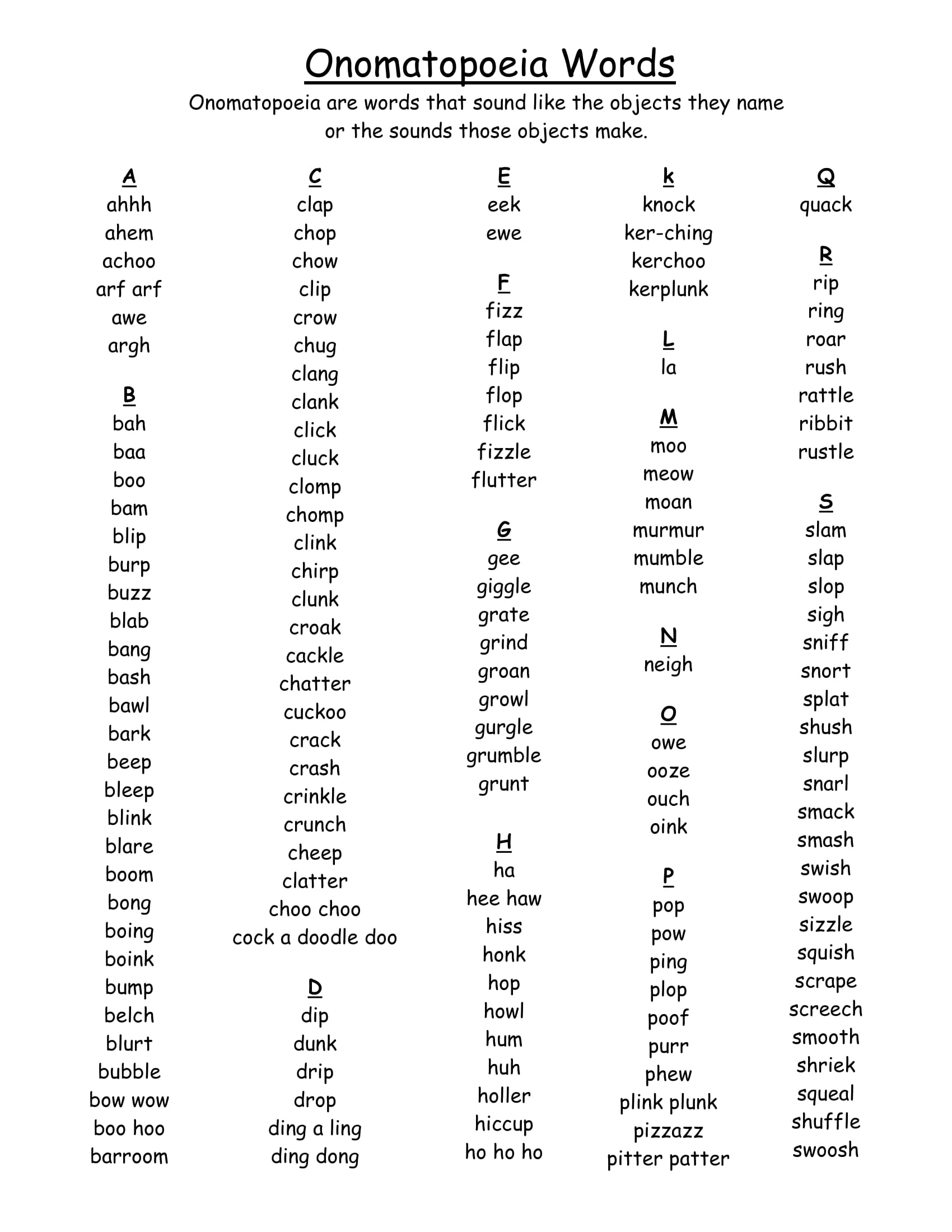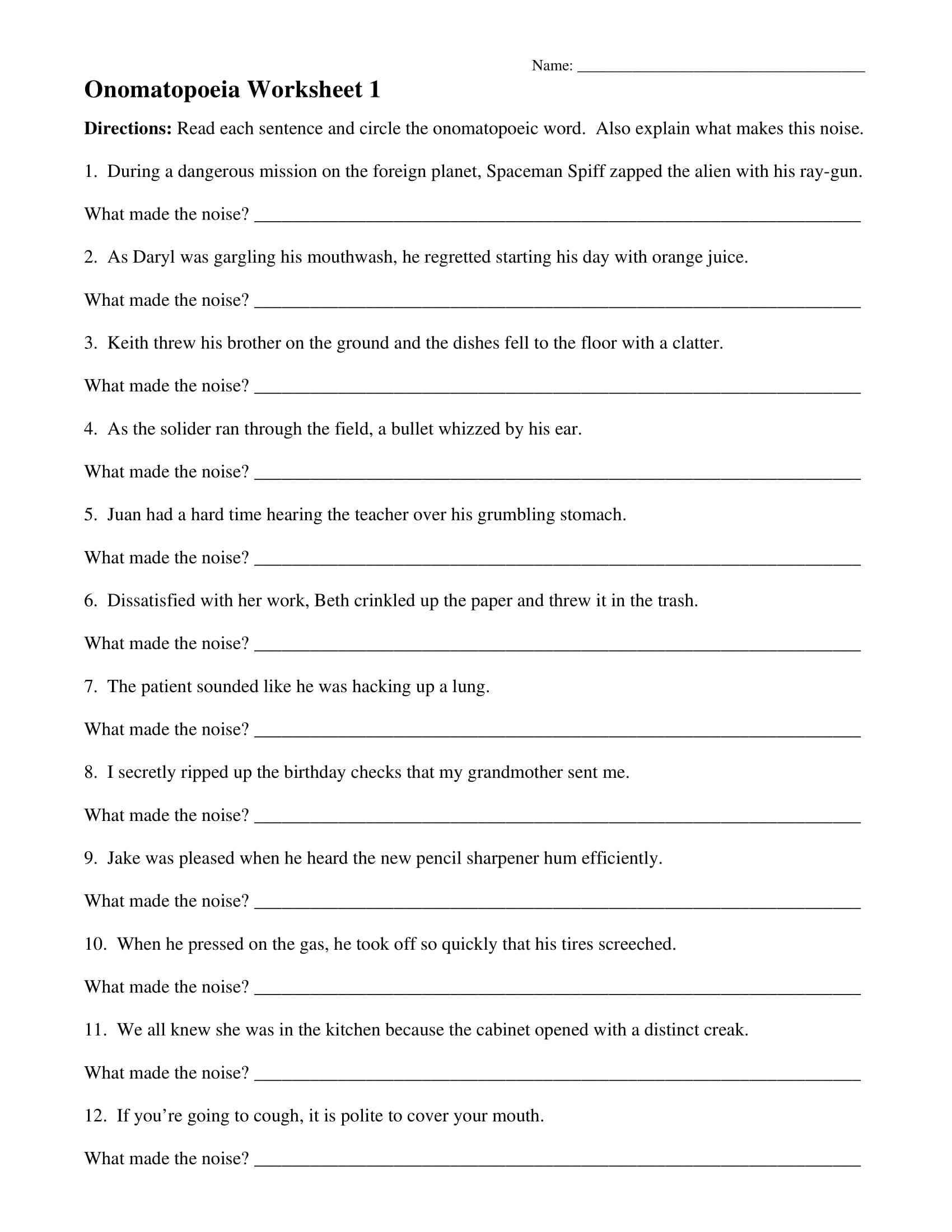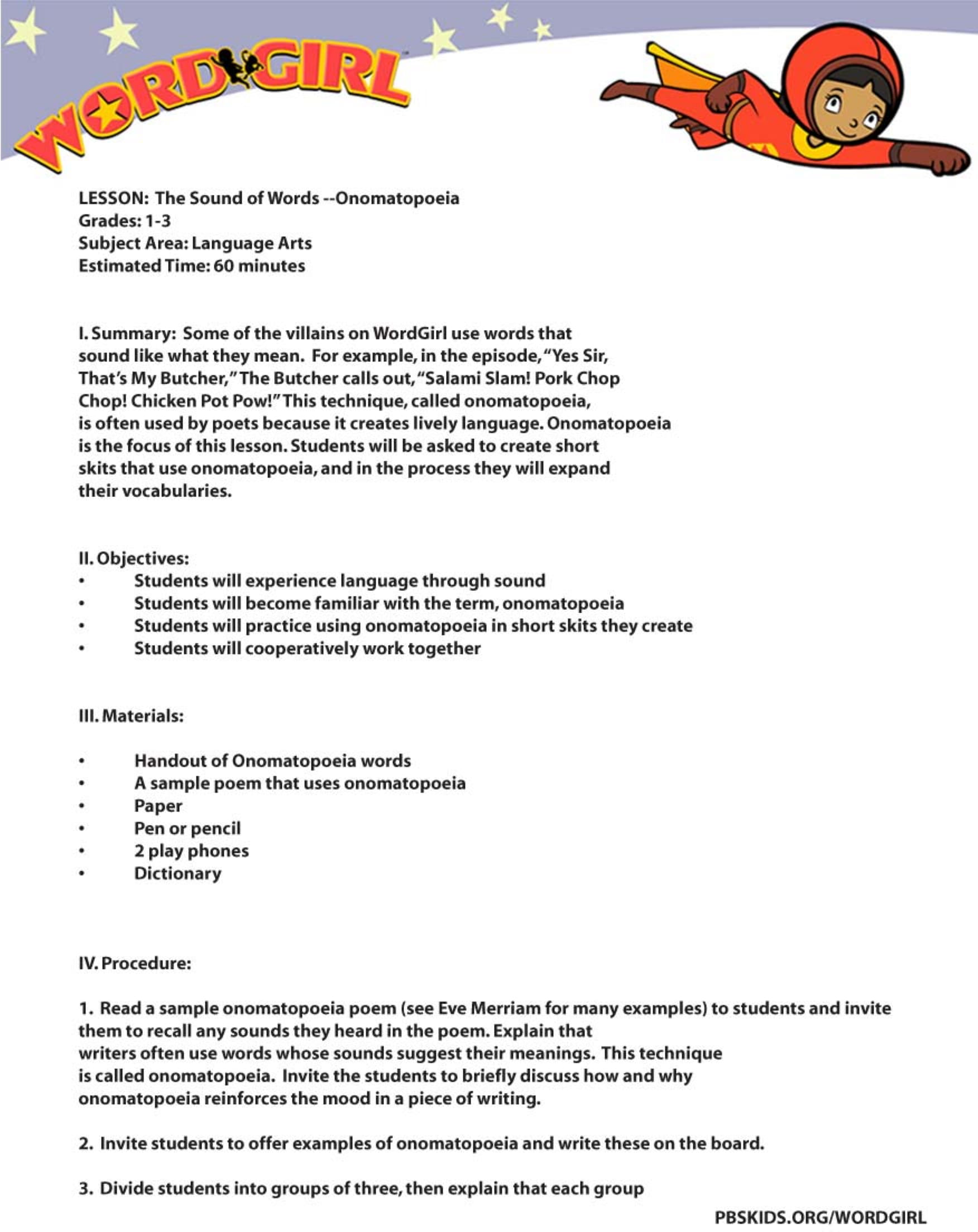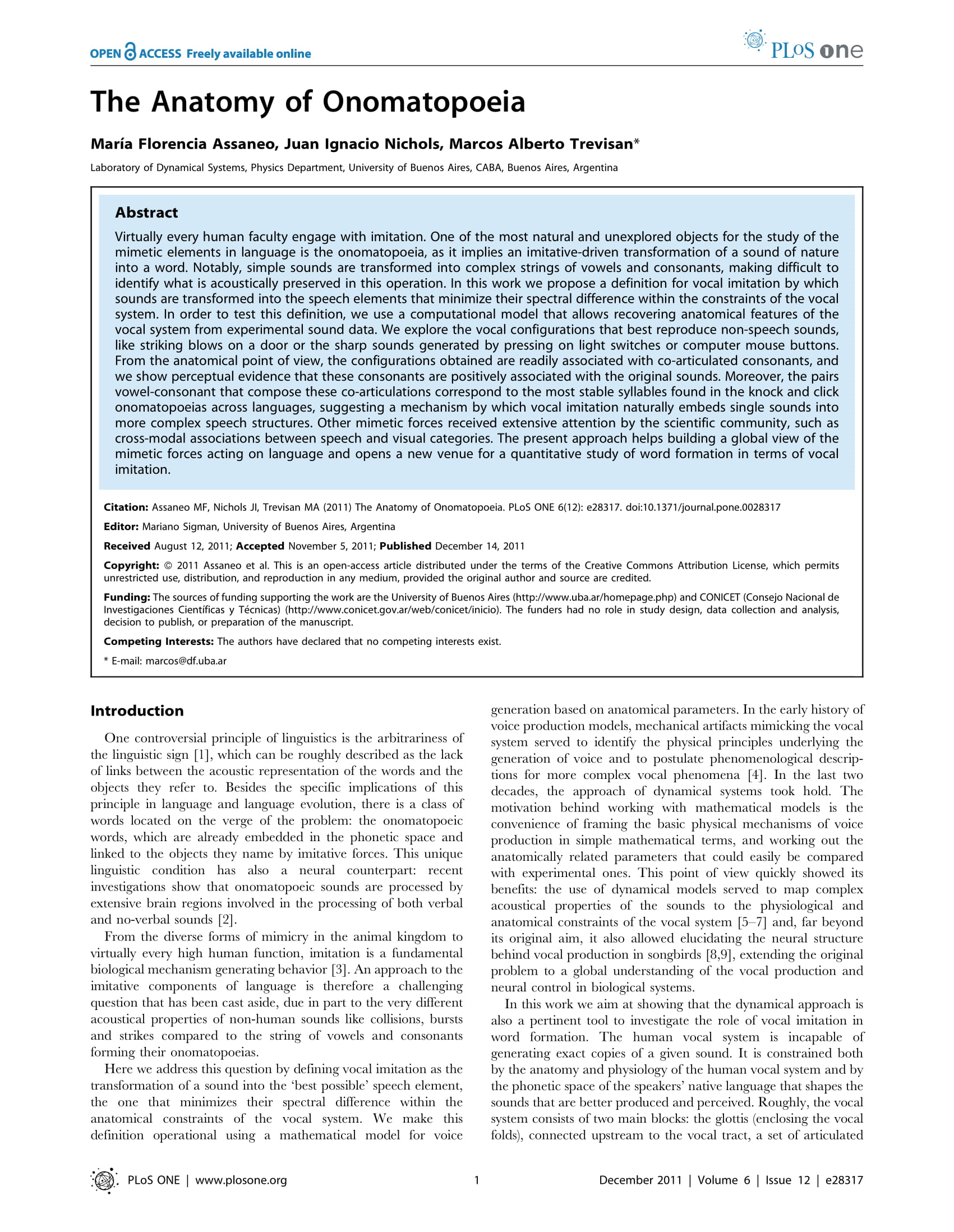9+ Onomatopoeia Examples
Perhaps you’ve sung along to the nursery tune “Old MacDonald Had a Farm” one too many times as a child. With a quack quack here, and a quack quack there—have you ever noticed how often we have used a certain sound in writing and literature for effect?
You might have come across many words that constitute the sound of an animal or a thing while reading a novel. These words are called onomatopoeia examples, which are mostly used by the author and other writers so that they can put sounds into the words they use in their works. But what is onomatopoeia and why do most (if not all) writers apply it in literature? To find out more about this type of figure of speech, go through this article.
Defining Onomatopoeia Example
Onomatopoeia Book Example
Onomatopoeia in Children’s Literature Example
What Is Onomatopoeia?
Onomatopoeia, which is pronounced as “AH-nuh-mah-tuh-PEE-uh,” refers to the figurative terms that poets and writers use to convey sound. Here, the word itself imitates the sound it makes, and somehow we “hear” it just as we have read it. Parallel sentences can be of great help to you as you can also use them to understand what they are and how to make the perfect parallel sentences needed.
The term “onomatopoeia” is derived from the combination of two Greek words: onoma, which means “name,” and poien, meaning “to make.” If taken literally, it simply means “to make a name or a sound”. Unlike many other figures of speech, like the simile and metaphors, the onomatopoeic words mean nothing more than the actual sound it makes. The word crash, for example, is often used as a sound effect to denote a collision between two or more objects, but it is also very useful in making an individual’s story appears a bit more expressive than normal.
Onomatopoeia can also be used in several different ways. Besides the sound of animals and objects colliding with each other, onomatopoeia can be used to convey the sound of the gears of a machine working, the horn of a car honking, the sound of the rain falling, and other sounds we hear in a day-to-day setting. In some instances, it may also be used to echo or suggest a meaning for readers to dwell upon. You may also see personification examples. Many onomatopoeic words have even developed meanings of their own aside from the sounds they make, like how the word whisper represents and describes a breathy sound and action of people conversing quietly.
However, it’s easy to mistaken some sounds for onomatopoeia. For instance, there are words like munch, chew, and sigh that may sound like the given action that they describe, but aren’t classified as onomatopoeia examples. The word munch may indicate a person munching on some food, but does munch sound like munching, even just a little bit? A person who signs doesn’t utter the word sigh out loud but instead lets out a deep breath that’s so muted, you don’t even hear it sometimes. You may also see cumulative sentences
Simply put, some words are mainly applied to add a poetic effect to a literary piece with ease. But even then, you should remember that words for sounds are not always defined as onomatopoeia.
Examples of Onomatopoeic Expressions
Although onomatopoeia is often used to add meaning in writing and storytelling, it’s not unusual to encounter people who like to use onomatopoeic words as everyday expressions.
- The buzzing bee flew straight to my dog’s ear.
- The book fell to the ground with a loud thump.
- The man fell into the lake with a knowing splash.
- The child was afraid of the roaring tiger.
- The rustling leaves made my hair stand.
The different animal sounds that we often hear or use (like in “Old MacDonald Had a Farm”) are considered as examples of onomatopoeia as well. It’s easy to recognize these sounds even without being used in a sentence, as these are the typical sounds produced by the subject they represent.
- Meow (cat)
- Moo (cow)
- Neigh (horse)
- Tweet (bird)
- Oink (pig)
- Baa (sheep)
- Quack (duck)
Onomatopoeia in Literature Example
Onomatopoeia in Literature Worksheet Example
Onomatopoeic Words Example
Examples of Onomatopoeia in Literature
It’s common practice for writers and poets to employ onomatopoeia in their works. This figure of speech often gives a unique rhythm to the text, making it interesting enough to entrance an audience. It is a lingusituic tool, which is salso fun and can be utlilized in literature, songs and advertidwmenta. This helps create a catch effect that many readers and listeteners can quick. recall. Check out balances sentences templates for more.
Listed below are some examples of how onomatopoeia is used in various literary works:
Example #1
“water plops into pond
splish-splash downhill
warbling magpies in tree
trilling, melodic thrill
whoosh, passing breeze
flags flutter and flap
frog croaks, bird whistles
babbling bubbles from tap”
—”Running Water” by Lee Emmett
Example #2
“Chug, chug, chug. Puff, puff, puff. Ding-dong, ding-dong. The little train rumbled over the tracks.”
—The Little Engine That Could by Watty Piper
Example #3
“Onomatopoeia every time I see ya
My senses tell me hubba
And I just can’t disagree.
I get a feeling in my heart that I cannot describe. . .
It’s sort of whack, whir, wheeze, whine
Sputter, splat, squirt, scrape
Clink, clank, clunk, clatter
Crash, bang, beep, buzz
Ring, rip, roar, retch
Twang, toot, tinkle, thud
Pop, plop, plunk, pow
Snort, snuck, sniff, smack
Screech, splash, squish, squeak
Jingle, rattle, squeal, boing
Honk, hoot, hack, belch.”
—”Onomatopoeia” by Todd Rundgren
Example #4
“It went zip when it moved and bop when it stopped,
And whirr when it stood still.
I never knew just what it was and I guess I never will.”
—”The Marvelous Toy” by Tom Paxton
5 Common Onomatopoeia Letter Combinations
There are times when we could easily identify what an onomatopoeic word is describing based on the letter combinations found within the given word. You may also see oxymoron sentences
To understand this method, let’s take a look at the following examples:
1. Water sounds
Words that have something to do with water or any liquid typically begin with the letter combinations sp- or dr-, while words which indicate a small amount of liquid often end in -le. Some examples include the words bloop, spray, sprinkle, squirt, dribble, drip, and drizzle, just to name a few. You may also see complex sentences.
- She jumped into the water with a huge splash.
- I don’t think an umbrella would be necessary. It’s just a drizzle.
- The ketchup squirted out of the bottle.
- My mom asked me to spray some water on her prized petunias.
- The coin fell to the river with a plop.
2. Vocal sounds
Sounds that are made from the back of the speaker’s throat tend to make a sound with a gr- letter combination at the beginning. On the other hand, words that come out of one’s mouth, specifically through the lips, tongue, and teeth, usually begin with mu-. Examples of words conveying a vocal sound include giggle, growl, gurgle, grunt, murmur, mumble, bawl, belch, blurt, and chatter. You may also see preposition sentences.
- She started giggling from inside her closet.
- My teeth were chattering while we waited for the bus to arrive in the cold.
- He murmured the words, “I’m sorry,” but she didn’t think he was sincere.
- I mumbled the answers to the exam to the person in front of me.
- I was in a panic, so I blurted out the truth to my parents.
- Collision sounds
Collisions often occur between two or more objects. This is usually signified by sounds that begin with the letter combination cl- for metal or glass object collisions, and those that end in -ng for sounds that resonate. Some of the most common examples of onomatopoeic words with collision sounds include bang, bam, clang, clank, clap, click, clink, ding, jingle, screech, slap, thud, and thump. You may also see exclamatory sentences.
- As the dog went up the pile of boxes, kerplunk it collapsed.
- The police car made a turn in a busy freeway with a loud screech.
- My roommate fell off his bunk bed in the middle of the night with a thud.
- You can easily purchase just about anything online with a click of a mouse.
- I didn’t notice the warning sign and accidentally bumped my head on the extremely low door frame.
4. Air sounds
Although air doesn’t exactly sound like anything, it does make some sort of sound once it blows through something or if a thing rushes through the air. Words that are associated with air often begin with wh-, contain the letter w, or end with -sh. Words under this category of onomatopoeia include flutter, swoosh, gasp, swish, whiff, whoosh, whizz, and whip. You may also see preposition sentences.
- The eagle fluttered its wings before it flew away from us.
- The ball whizzed past my ear and into the net behind me.
- Swoosh, the basketball went through the net so smoothly even the referee couldn’t believe it.
- When the host admitted to announcing the wrong winner, there were multiple gasps from the audience.
- She took a whiff off her ex-boyfriend’s favorite sweatshirt before throwing it away.
5. Animal sounds
Believe it or not, but animals are known for speaking different languages in other countries as well. You might hear some chickens make a cluck-cluck sound, while others might claim that it’s a bok-bok, tok-tok, kot-kot, or cotcotcodet sound. Either way, animal sounds are easy to distinguish thanks to the number of nursery rhymes, storybooks, and comics we’ve heard and read. Onomatopoeia examples are categorized into different sounds and one of them is the animal sounds like a tweet, meow, cheep, purr, etc. There are many complete-incomplete sentence templates you can take a look at.
- When the owl hooted, I nearly peed in my pants.
- The sound of wolves howling at the moon always creeps me out.
- Our neighbor’s dog just won’t stop barking at our tree.
- The snakes hissed menacingly at the animal control officers.
- The bird outside my window starts chirping just when the sun starts to rise.
Onomatopoeia Word List Activity Example
Onomatopoeia Worksheet Example
Onomatopoeia Worksheet for Kids Example
The Anatomy of Onomatopoeia Example
The General Function of Onomatopoeia
You must be wondering, is it really necessary to employ onomatopoeia, or any figurative language for that matter, in one’s writing?
Though writers are often given the freedom to express themselves creatively with their own words, they’re also encouraged to paint a mental picture of what they’re trying to convey through various expressions. Onomatopoeic words have the ability to capture a sound and bring a language to life in a reader or listener’s imagination. This literary device can be used for many purposes as it helps the audience hear the sound of the word they reflect perfectly, without much hassle. The beauty of these onomatopoeic words lies in how they can awaken one’s senses with the simple sound of an animal, object, or action. Also, take a look at bridge sentences for more details on how to make them with ease.
If you think about it, “The gushing wind hit her skin” is a more meaningful description as opposed to just saying, “The wind hit her skin.” The latter seems much too plain and simple to give a reader something to ponder on. Check compound sentences for more. It’s almost like reading a thesis statement made by your college professor, who also happens to care less about flowery words and figurative language. Without the use of onomatopoeia, the expression does not possess the same emphatic effect that would allow it to portray an idea powerfully enough to interest readers. Precisely, onomatopoeia builds a different kind of an emphasis that an ordinary expression can never make.
Onomatopoeia is a widely used literary device that the natural sound of a thing or the event. By creating a sound effect to mimic what it describes, an author or speaker can easily express his/her thoughts to an audience in the most effective, accurate and creative manner. Learning about onomatopoeic words will bring you one step closer to refining your writing skills to offer an audience a better reading experience. So the next time you find yourself writing a special piece, try using onomatopoeic words of your choice; you’d be surprised by how entertaining these figurative terms can be. You may also see interrogative sentences.


